Case Study: TEDx as "Formation of Concept" [Activity Theory]

Activity Theory or the “Cultural-historical activity theory (CHAT)” is an interdisciplinary philosophical framework for studying both individual and social aspects of human behavior. Activity Theory is an established theoretical tradition with several theoretical approaches developed by different theorists. Originally, it was inspired by Russian/Soviet psychology of the 1920s and 1930s.
A major development of Activity Theory during the past decade is Andy Blunden’s account “An Interdisciplinary Theory of Activity”. Andy Blunden is an independent scholar in Melbourne, Australia. He works with the Independent Social Research Network and the Melbourne School of Continental Philosophy, and has run a Hegel Summer School since 1998.
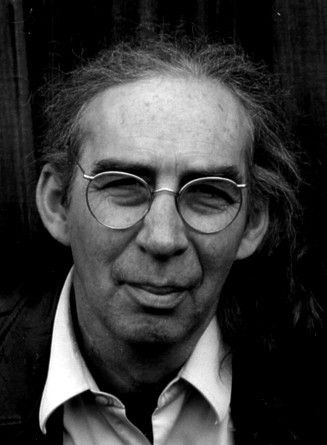
Blunden’s vision of the interdisciplinary theory of Activity is inspired by Vasily Davydov’s argument:
I always argue that the problem of activity and the concept of activity are interdisciplinary by nature. There should be specified philosophical, sociological, culturological, psychological and physiological aspects here. That is why the issue of activity is not necessarily connected with psychology as a profession. It is connected at present because in the course of our history, activity turned out to be the thing on which our prominent psychologists focused their attention as early as in the Soviet Union days. Things just turned out this way. (Davydov, 1999: 50.)
In order to develop the notion of “Project as a unit of Activity” as a theoretical foundation of the new interdisciplinary theory of Activity, Blunden adopts Hegel’s logic and Vygotsky’s theory about “Unit of Analysis” and “Concept” as theoretical resources. The process is documented in four books: An Interdisciplinary Theory of Activity (2010), Concepts: A Critical Approach (2012), Collaborative Projects: An Interdisciplinary Study (2014), and Hegel for Social Movements (2019).
Activity as Formation of Concepts
The notion of "Activity as Formation of Concepts" is a core idea of Andy Blunden's approach to an interdisciplinary theory of Activity.
According to Andy Blunden, there are three phases of the formation of concepts:
- Phase 1: Initialization;
- Phase 2: Objectification;
- Phase 3: Institutionalization.
Let's use TEDx as an example.
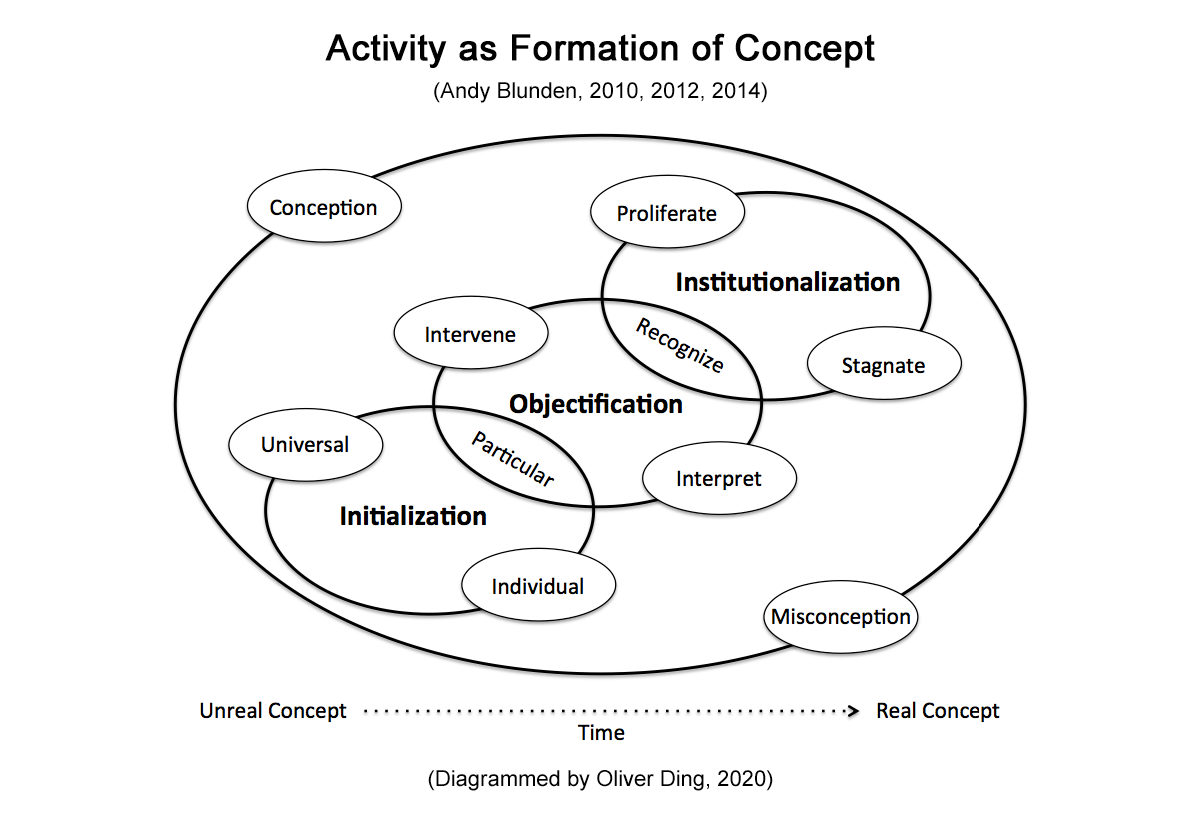
The notion of three phases is inspired by Blunden’s case study “Collaborative Learning Space”. I have to point out, Blunden is relatively unconcerned with demarcating the boundaries between the successive phases of a project. We should consider the above diagram as a rough representation. Blunden definitely uses “Objectification” and “Institutionalization” in his writings. However, he doesn’t obviously use the term “Initialization”.
Individual, Particular and Universal
I also have to mention that Blunden doesn’t tie Hegel’s three movements (Universal, Individual and Particular) with “Initialization” since he doesn’t use the term “Initialization”. Blunden says, “A concept originates in a problem or in an opportunity which arises within the social practices of some institution, positing a new need, designating either the problem or a solution. But such a concept will remain ‘unreal’ unless it is objectified.”(2014, p.172) In fact, Particular leads to objectification.
Blunden uses “Tree” and “Freeway” as two examples for explaining these three movements. Since two examples are existing concepts. Let’s use “TEDx” as an example for our discussion.

TEDx is an open brand program which is hosted by the non-profit TED Foundation. The “x” of TEDx means an independently organized TED event. The TEDx program allows local volunteers who obtain a free license from TED to organize independent events similar to TED’s 18 minutes format. TED officially launched the TEDx program in 2009. The first TEDx event is TEDxUSC 2009 which was hosted at the University of Southern California. Local TEDx event teams only can use their local TEDx logo as the brand identity for their events.

Let’s apply our diagram and three movements to this case.
- Universal: “ TEDx” is a word that refers to a new concept of "Open Brand" of events.
- Individual: The TEDxUSC 2009 is an individual local TEDx event. It uses its own logo “TEDxUSC”.
- Particular: It refers to particular activities of hosting and organizing local TEDx events around the world.
I consider Universal and Individual as two tendencies and Particular as Orientation because Particular refers to participation in social practice behind the new concept. The orientation of Particular leads to Objectification which is the following phase of Initialization.
The Objectification of Concept
Blunden clearly claims that there are three aspects of objectification of concept: symbolic, instrumental, and practical. By adopting the germ-cell diagram, we can present these ideas with the diagram below.

Symbolic objectification
According to Blunden, “Firstly, the moment someone first communicates the concept of the project it is given a name or symbolically represented in some other way, after which the word or symbol functions as a focus for actions. The word eventually enters the language and acquires nuances and meaning through the development of the project and its interaction with other projects and institutions.” (2014, p.9)
This is symbolic objectification. I highlight “Verbal” and “Visual” as two tendencies of symbolic objectification. Its orientation is “Embed” which means the name will be used within the language of the community and the logo or other symbols will be used with materials.
For the case of TEDx, the below picture represents the symbolic objectification of the TEDx project. The name of the project is “TEDx”, the concept of “TEDx” refers to an “independently organized TED event”. The whole design is a meta-logo of the TEDx brand's visual identity. The “Name” is a placeholder for local TEDx events teams to place their local place’s name.

Instrumental objectification
The second aspect of objectification is instrumental objectification. According to Blunden, “Secondly, the project may be objectified by the invention and production of some new instrument or by the construction of material artifacts which facilitate or constrain actions in line with the project and facilitate its integration into the life of a community. The word in which the project is symbolically objectified may then be taken as referencing this artifact, reifying the concept as if it were an independently existing object, rather than an ideal functioning as the focus of a new form of social practice which constitutes it.” (2014, p.9)
Here we see Blunden clearly points out there are two ways of adopting instruments. I use the term “designed” to refer to “by the invention and production of some new instrument” and the term “found” to refer to “by the construction of material artifacts which facilitate or constrain actions in line with the project and facilitate its integration into the life of a community”. You can find details about “Designed/Found” in my article about artifacts and the materiality turn: Hammer, Hammering, and Affordance.
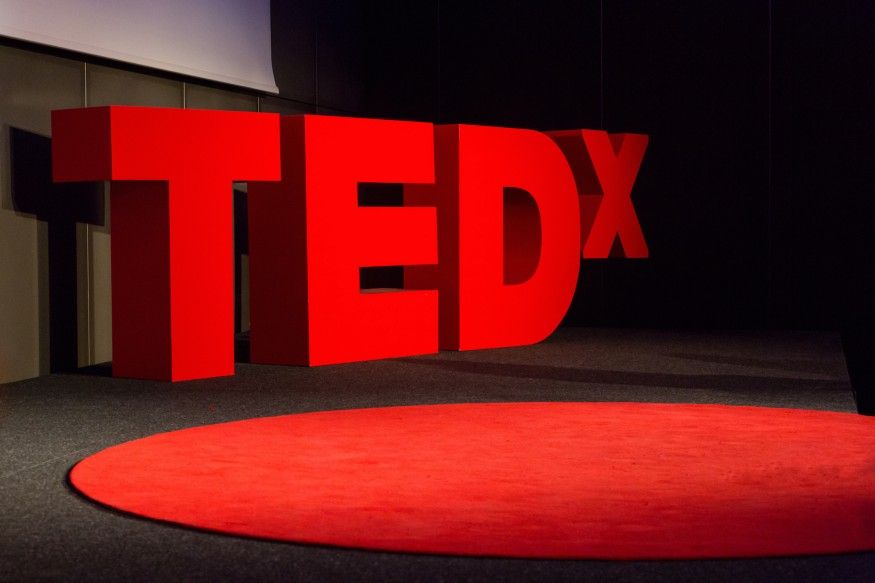
Look at the above picture, do you find there is a red circular carpet on the stage? This is a great example of instrumental objectification of the concept of TEDx and an “independently organized TED event”.
Now let’s visit a webpage on the TED official site: TEDx Organizer Guide > Design the experience. The guide gives suggestions on using the full official TEDx logo, “Every stage is required to include your official TEDx logo with your full event name. So make sure you create a large logo and place it in a visible space on the stage. If you can’t get a stand-up, 3D logo, a projection screen could also work.” The guide also considers how to make a good view, “Position your speakers, the screen, and any props carefully so that there’s a good view for the audience. For example, you’ll want to give your speakers a specific place to stand for their talk. (A red circular carpet, perhaps?)” Thus, the red circular carpet is not an official rule or requirement. The room of instrumental objectification is open with potential opportunities for creativity.
Another example of instrumental objectification is TEDx in a Box. See the picture below.
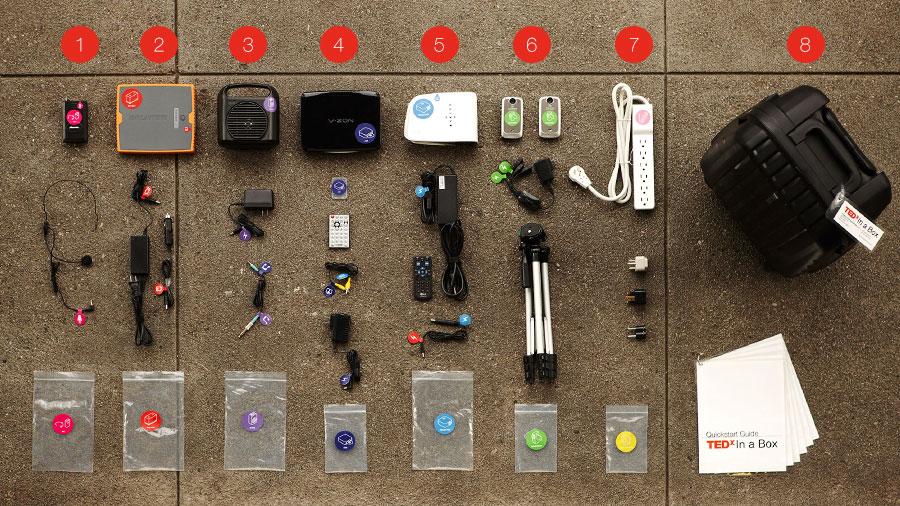
Why does the TEDx program design this toolkit?
According to TED, "The idea for TEDx in a Box came from TEDxKibera, a TEDx event held in the slums of Nairobi. Despite a lack of quality local resources, the event was an extraordinary success. With TEDx in a Box, individuals in developing communities are delivered all the resources they need in order to organize a TEDx event, packaged in a portable box."
The formation of a concept is a large social process. It will face various situational challenges, especially in developing communities. So, the phase of instrumental objectification needs creative design and innovative thinking such as Ecological Practice Design.
Practical objectification
The most important is practical objectification. According to Blunden, “…once the project achieves relatively permanent changes in the social practices of a community, the project transforms from a social movement into customary and routinized practices — an institution. In this instance, the word may be taken as referencing the form of practice in which the project has been given practical objectification and normalized.” (2014p.9)
Practical objectification refers to participants, participation, and community. This is the connection between concept and activity.
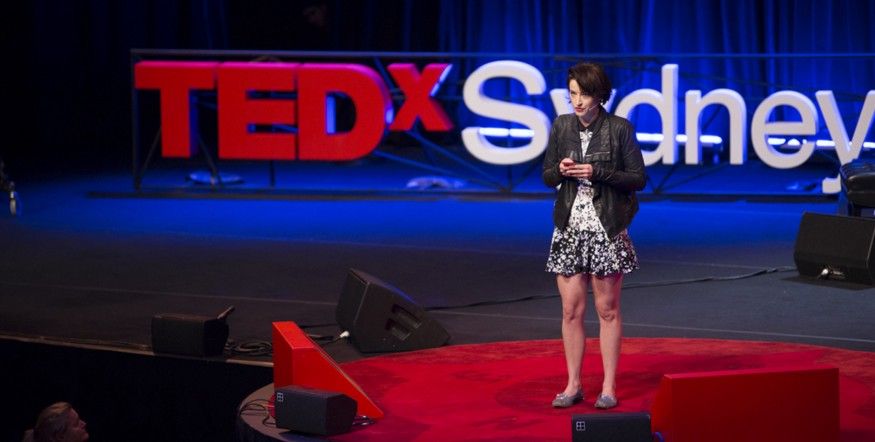
According to the official website of TED, as of December 31, 2020, there are 35,713 local TEDx events which were held in more than 130 countries. The TEDx Talks library contained over 30,000 videos from these local TEDx events. There are various ways of participating in the TEDx community, such as organizing, curating, hosting, designing, speaking, sponsoring, photographing, videoing, lighting, translating, listening, watching, sharing, etc. It’s not the word “TEDx” and the slogan “independently organized TED event” define the movement, but real actions of thousands upon thousands volunteers define the movement.
The above TED Talk is about making a TED Talk video. Jason Wishnow, the Director of Film and Video at TED, explains how to shoot a TEDTalk.
As Blunden emphasizes, “…it is only possible to say what a concept is, even in terms of its realisation in word meanings, in the context of the activity in which the concept is to be realised. A word is meaningful only within the context of the relevant project.” (2012, p.293) If you want to understand the concept of “TEDx” and “independently organized TED event”, don't stop at the word meaning level. You have to get involved in the community and be part of the practical objectification of TEDx.
